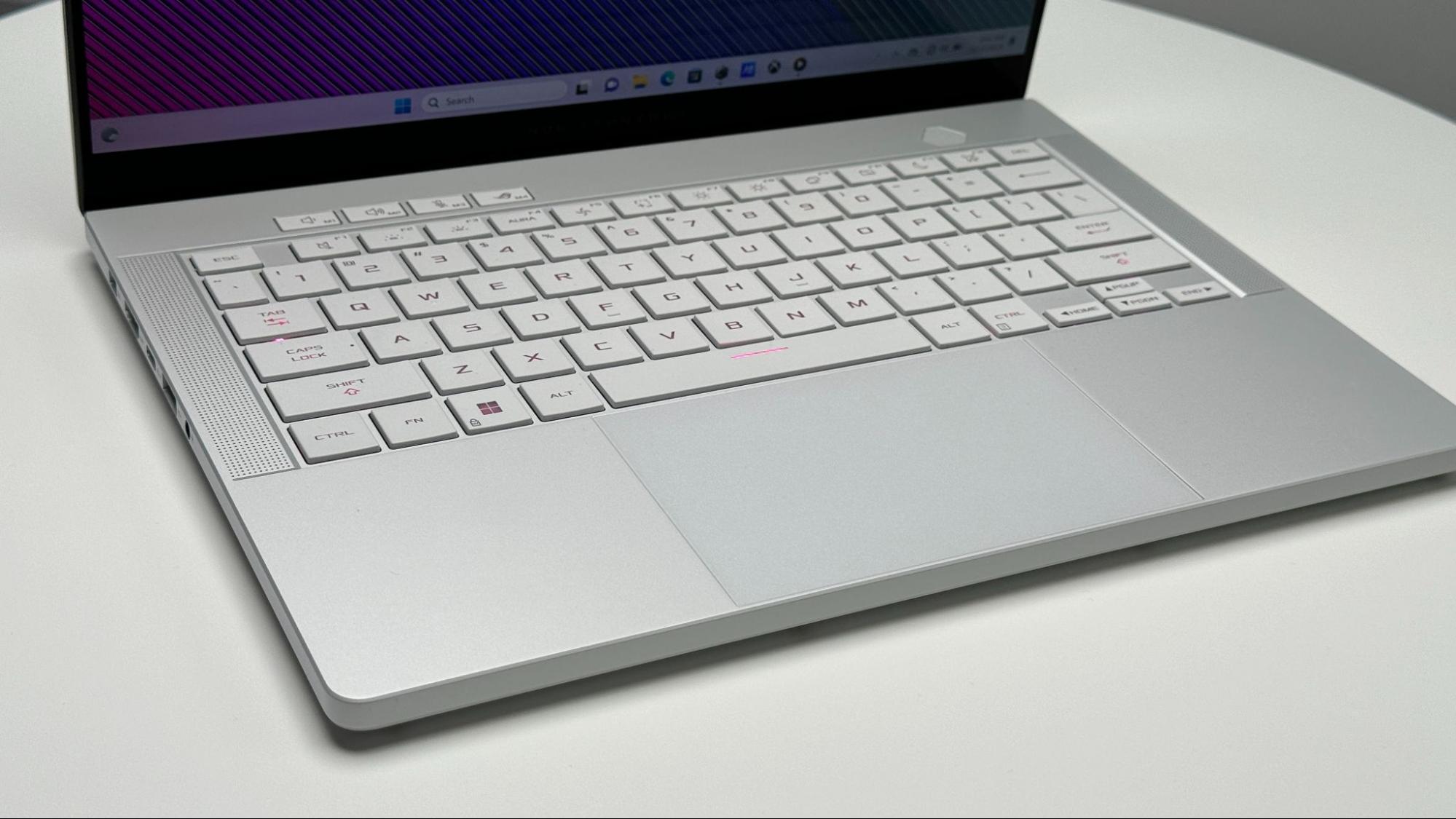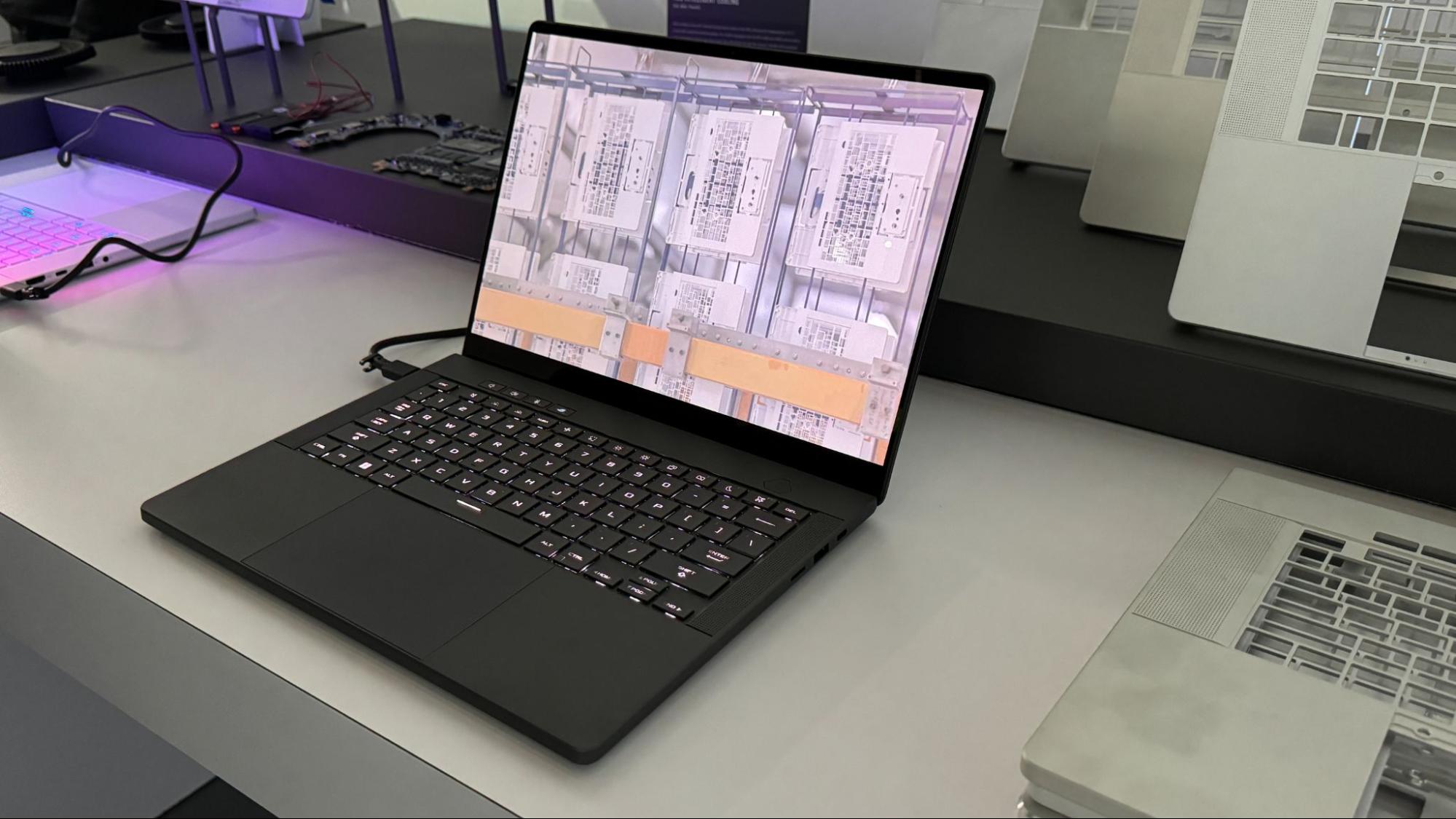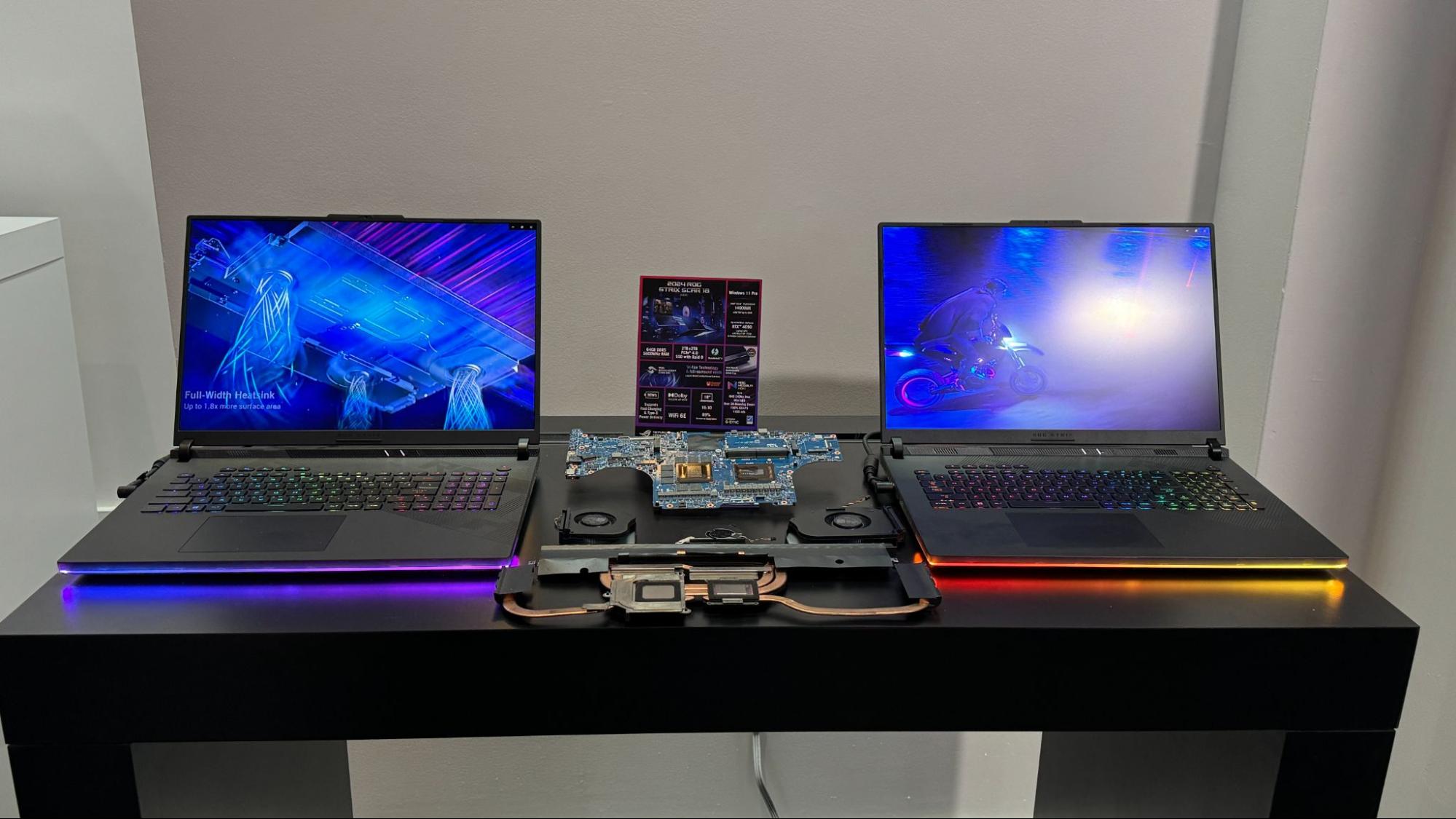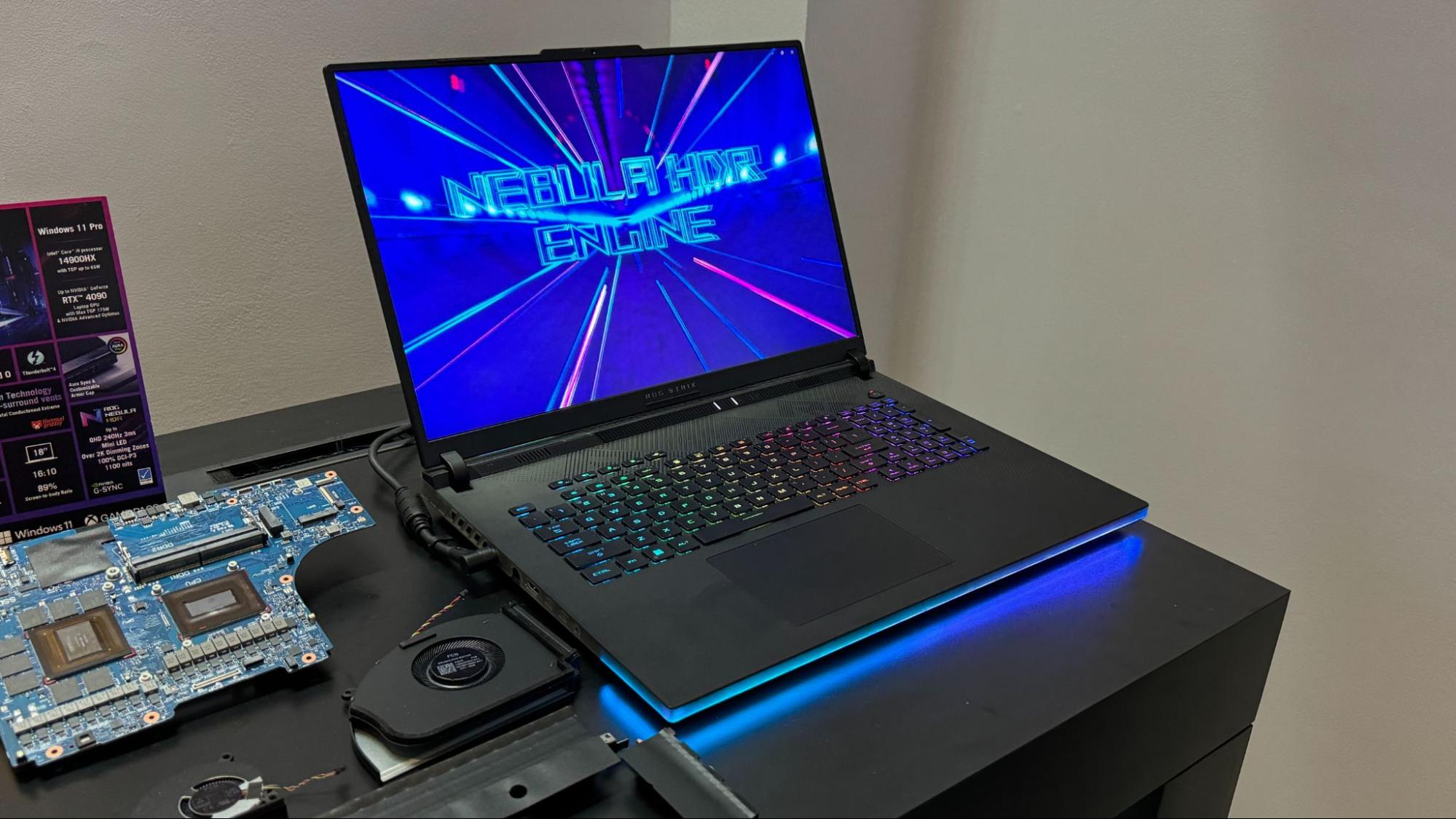The Asus ROG Zephyrus, often considered one of thebest gaming laptopsdue to its compact size, long battery life (in models we tested) and solid performance is getting a makeoverat CES. The new Zephyrus G14 and G16 are slimmer, cleaner, and use the latest processors (the G14 uses AMD, the G16 has Intel Core Ultra.)
Both devices now have unibody designs with aluminum lids. Asus has gotten rid of the AniMe Matrix pixel art display from older models in favor of a single slash on the lid. It also emphasizes the ROG logo, which I’m a fan of (I’ve never been a fan).
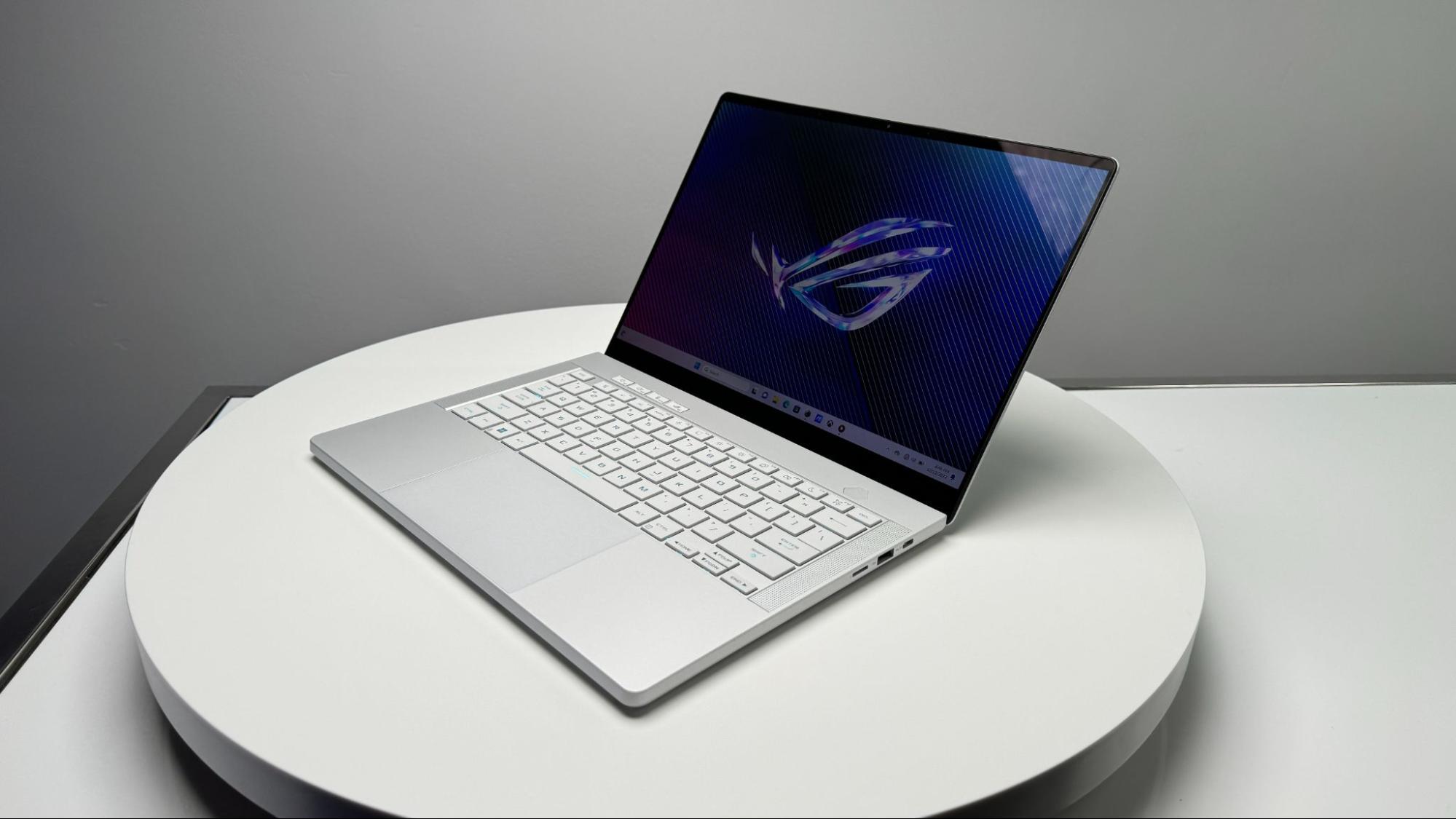
Notably, there are some spec differences. The 14-inch Zephyrus is using AMD’s Hawk Point processors up to an AMD Ryzen 9 8945HS in combination with Nvidia GPUs up to a GeForce RTX 4070. The previous G14 went up to an RTX 4090, but to make it slimmer, Asus has topped it off at an RTX 4070 (65W with 25W boost).
The G14 is also getting an OLED display up to 2880 x 1800, 120 Hz with support for both G-Sync and Dolby Vision.
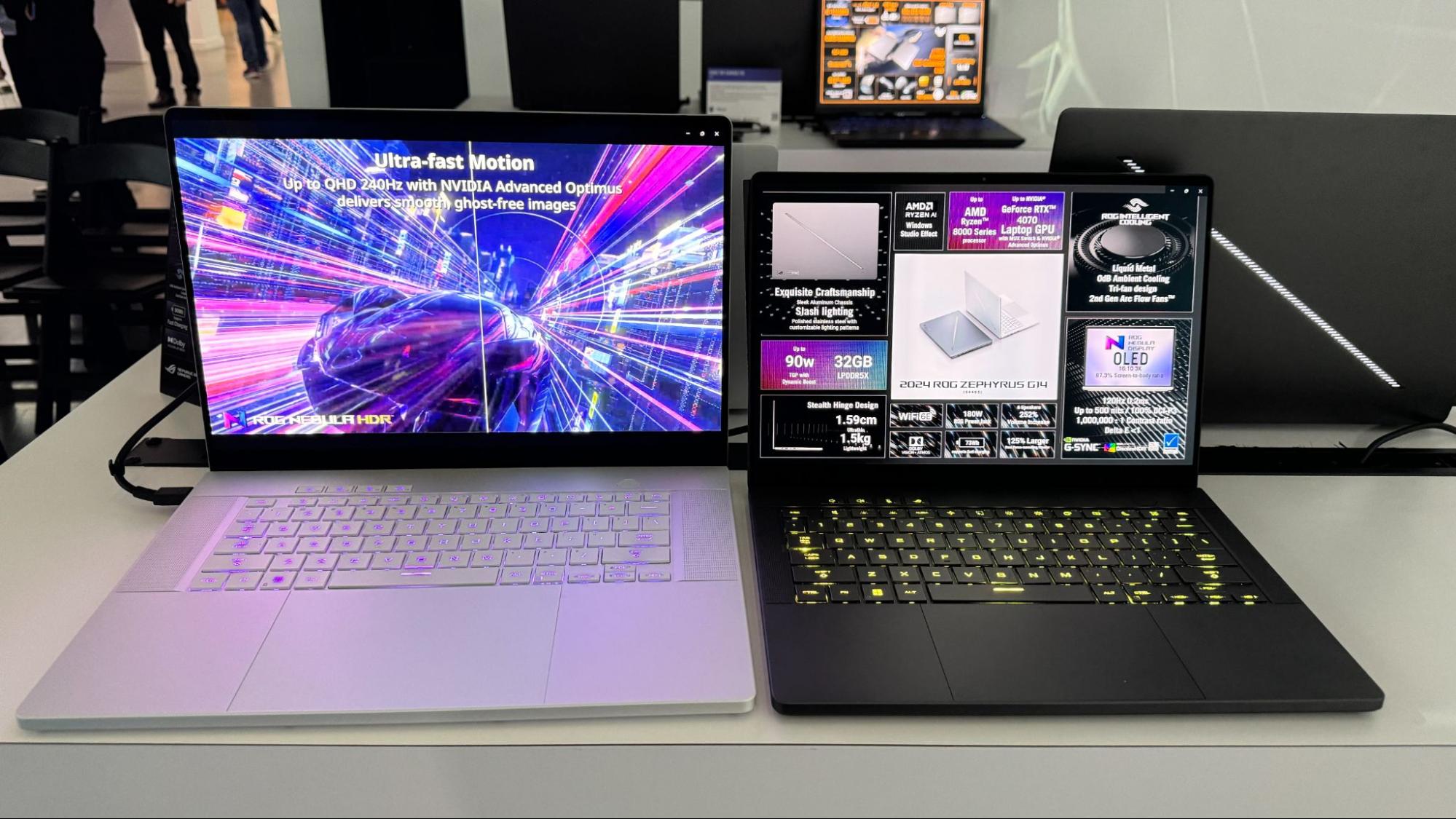
Meanwhile, the larger G16 goes up to a Core Ultra 9 185H and GeForce RTX 4090 (95W with 20W boost). The 16-inch panel, also available with OLED (or in some markets, LCD), is lower resolution at 2560 x 1600, but significantly faster at 240 Hz. Asus says both the G14 and G16 are the first gaming laptops to meets its “Nebula” OLED display specs.
Both laptops have some similarities, including Wi-Fi 6E, thermal grizzly liquid metal on the CPU, and a new “tri-fan” cooling solution. Each also comes in two colors (black and silver), boasts also a 1080p webcam, and a keyboard with 1.7 mm travel and single-zone RGB.
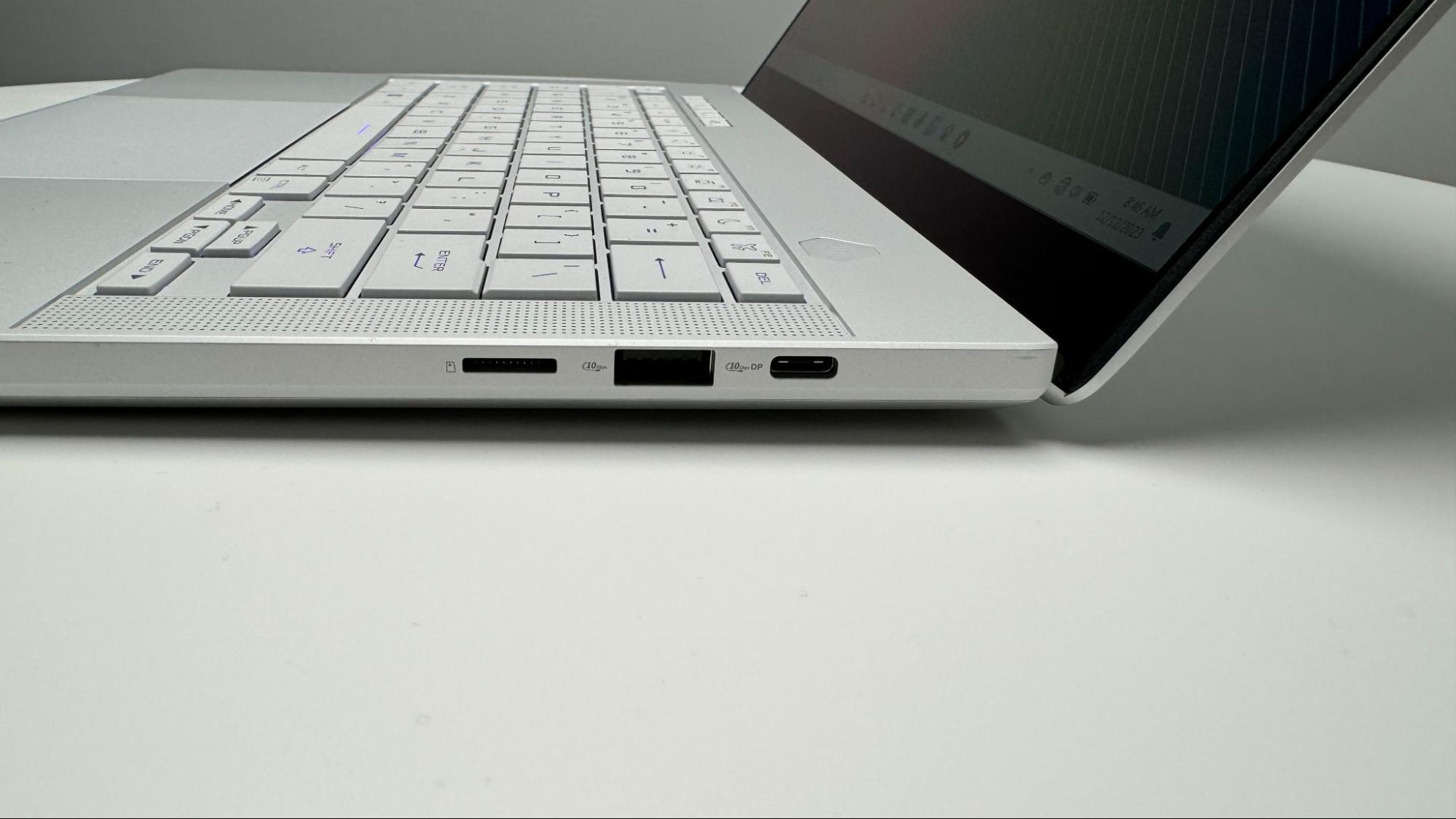
The G16 is 4.07 pounds with an RTX 4050, 4060, or 4070 or 4.3 pounds with an RTX 4080 or RTX 4090. The thickest version of the G16, with an OLED panel and RTX 4070, 4080, or 4090 is 0.69 inches. The smaller G14 is 3.31 pounds and 0.64 inches thickDespite their thin profiles, the two Zephyrus laptops have decent port options. The G14 has USB 4.0 Type-C, three USB 3.2 Gen 2 Type-A ports, HDMI 2.1, anaudiojack, and a microSD card slot. The G16 switches USB 4 out for Thunderbolt and swaps the microSD card slot for a full-sized SD card reader.
Get Tom’s Hardware’s best news and in-depth reviews, straight to your inbox.

Both the Zephyrus G14 and G16 are set to launch in Q1 of this year, but Asus toldTom’s Hardwarethat pricing wouldn’t be available until closer to release.
Outside of the stealthy Zephyrus notebooks, Asus is introducing new Strix Scar 16 and 18 laptops for high-end gaming.The new Scars will use 14th Gen Intel as opposed to Core Ultra, going up to a Core i9-14900HX with a TDP up to 65W, along with an Nvidia RTX 4090 laptop GPU with a max TGP of 175W. Instead of OLED, the new Scars will use Mini-LED screens at 2560 x 1600 at 240 Hz with G-Sync support, sporting Asus' ROG Nebula HDR brand.
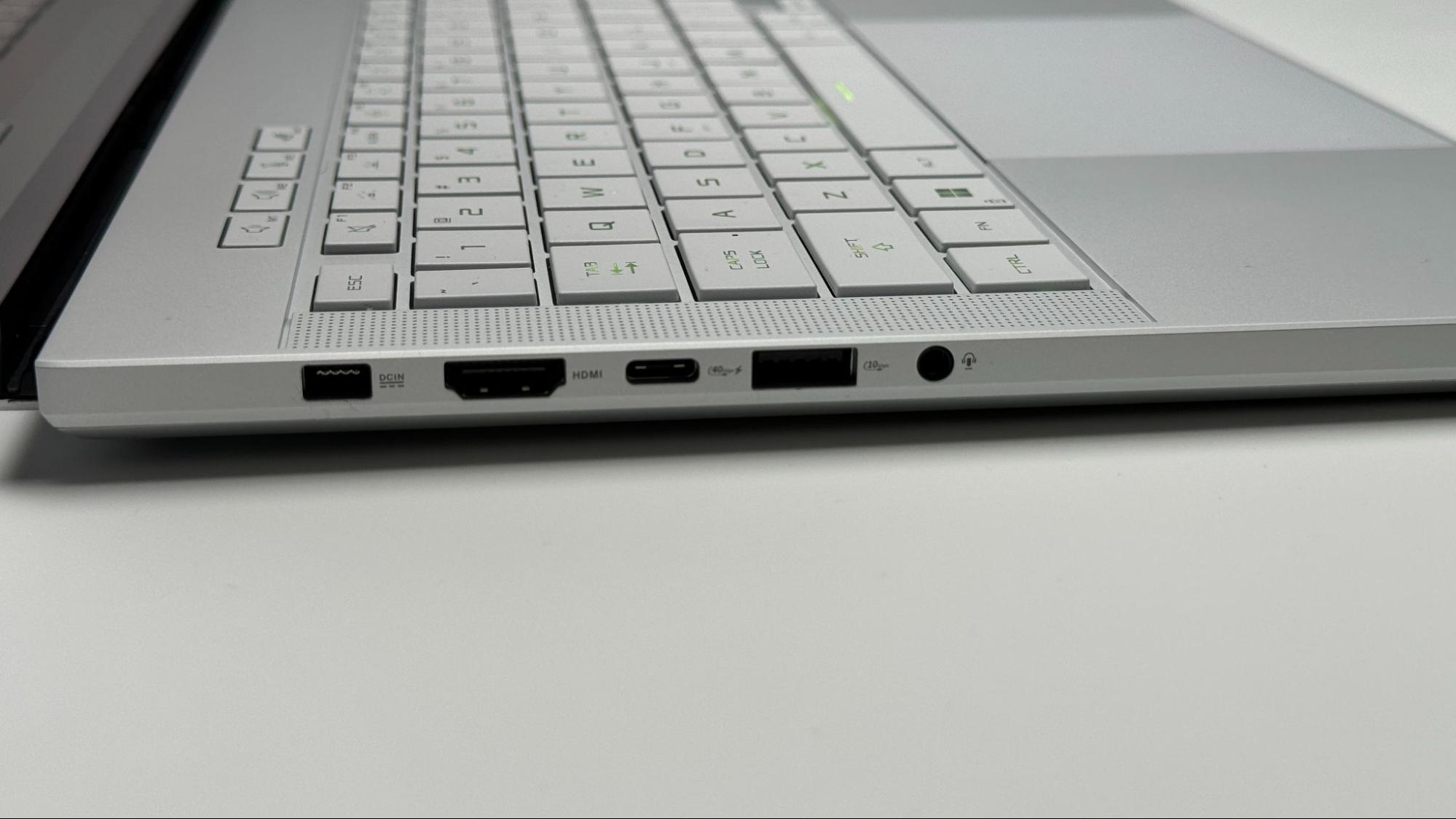
The Scar 16 will start at $2,899.99 with the Core i9-14900HX, Nvidia GeForce RTX 4080, 32GB of DDR5-5600 of RAM and a 1TB SSD, and will go up to $3,999.99 with an RTX 4090 and 2TB drive. Meanwhile, the Scar 18 will begin at $2,999.99 with the same CPU, GPU, RAM and storage as the Scar 16, and top out at $3,999.99 with the same 4090, but go to 54GB of DDR5-5600 RAM and 2TB of storage. Documents on availability suggest that Asus will have some versions of the laptop with cheaper LCD displays.
Andrew E. Freedman is a senior editor at Tom’s Hardware focusing on laptops, desktops and gaming. He also keeps up with the latest news. A lover of all things gaming and tech, his previous work has shown up in Tom’s Guide, Laptop Mag, Kotaku, PCMag and Complex, among others. Follow him on Threads@FreedmanAEand BlueSky@andrewfreedman.net.You can send him tips on Signal: andrewfreedman.01
